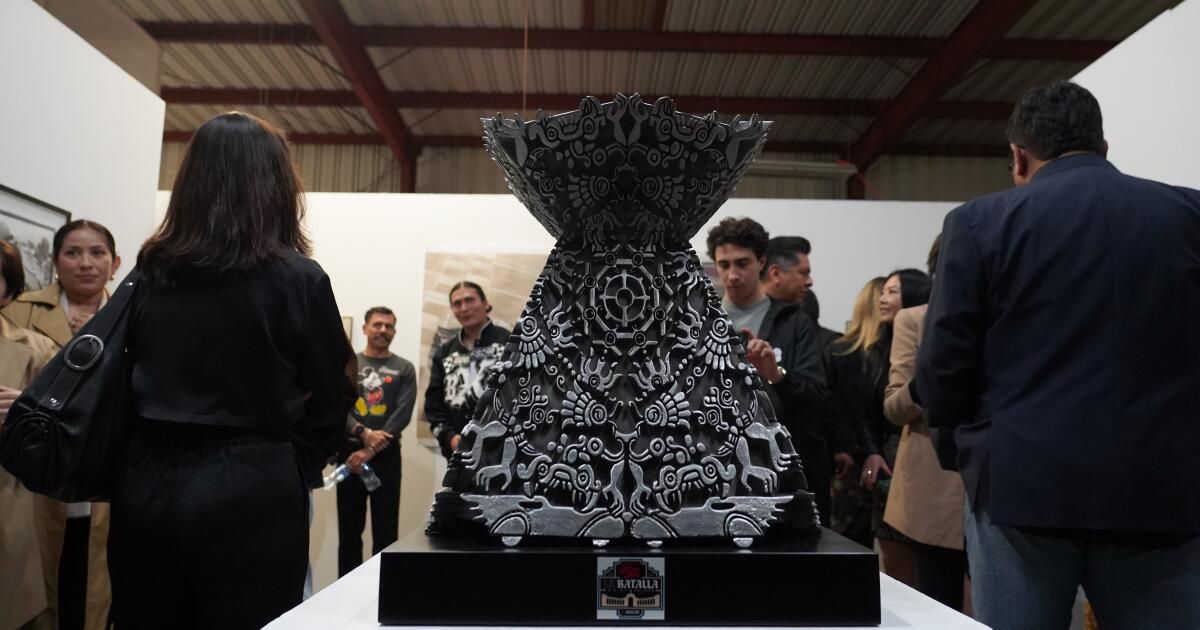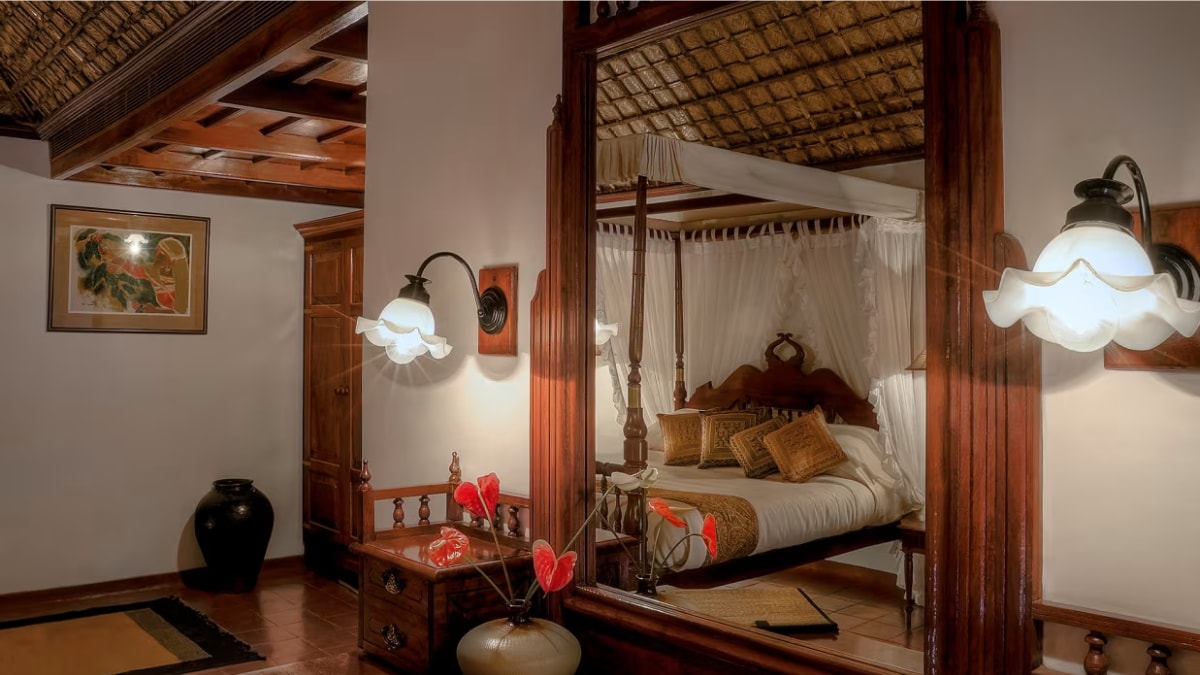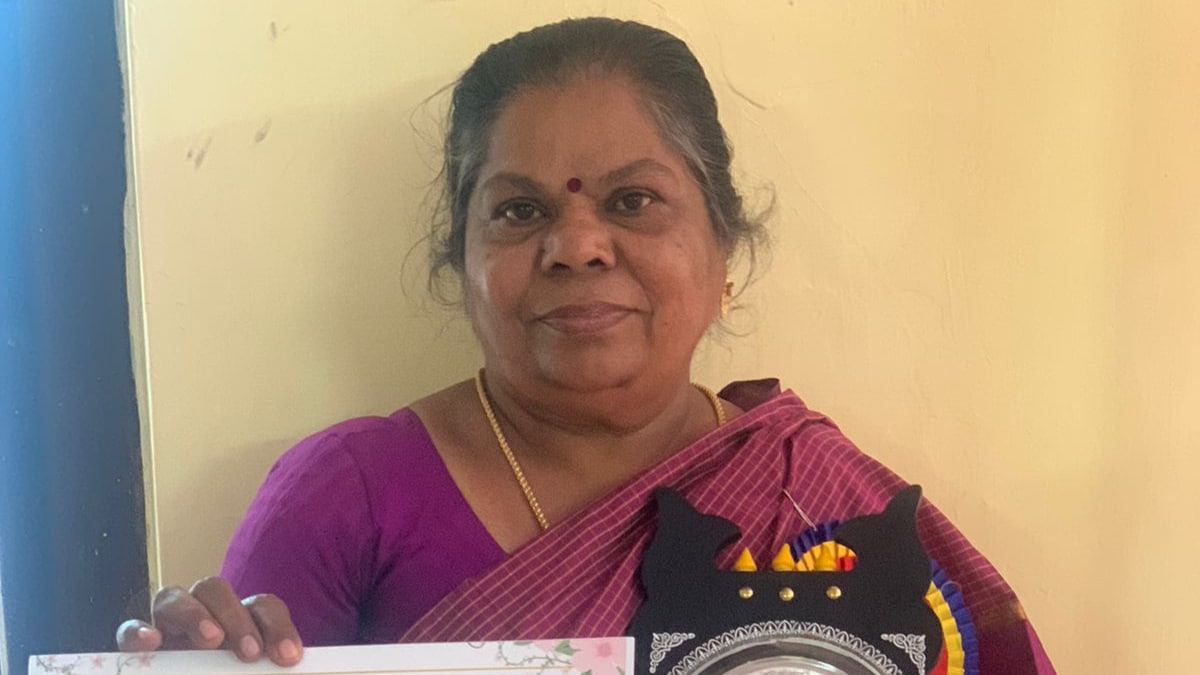When NASCAR approached Ozzie Juárez, artist and founder of Tlaloc Studiosto make a trophy for the NASCAR Mexico Series race, which opened at the LA Memorial Coliseum this Sunday, knew it had to sound true to his own style while also answering one main question: “If I were a Mexican runner and get a trophy from Los Angeles, what would I like it to look like?” The gleaming two-foot-tall pyramid etched with a collection of Aztec symbols looks more like an art sculpture than a trophy. And with its mix of references pre-Columbian and pop culture touches, you know it's a Juárez piece as soon as you see it.
When thinking about the trophy, Juárez discarded 10 different sketches before landing on this current version. He needed to find a version that seemed intentional and representative of him as an artist while also paying homage to the sport and the triumph of the drivers. “At first I almost had nightmares that the trophy wasn't what I wanted,” he says. “Thousands of people will see this trophy, whether on camera or online. “I want this to be as special as possible.”

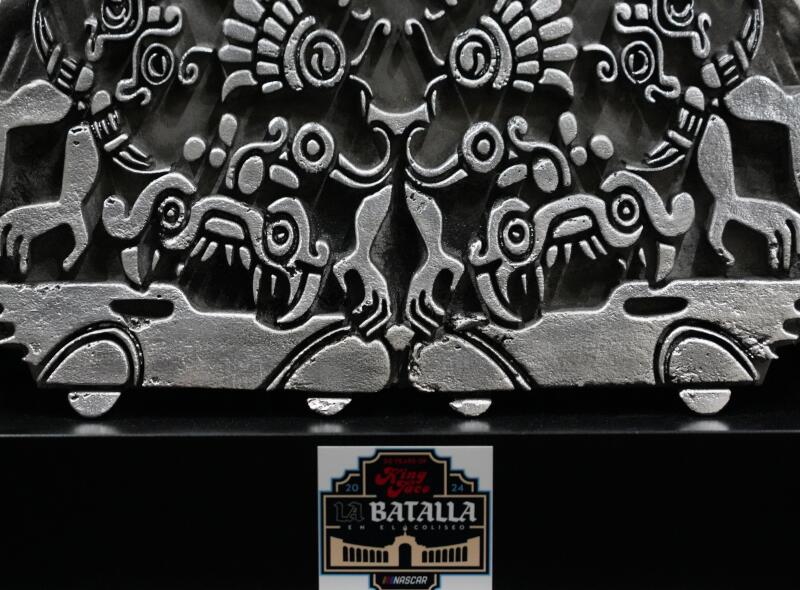
The gleaming two-foot-tall pyramid etched with a collection of Aztec symbols looks more like an artistic sculpture than a trophy. (Kaela Swanson/NASCAR)
When the trophy was unveiled at an event at Tlaloc Studios this week, the crowd was literally drawn to the piece, and more than one person asked Juárez if they could touch it. There is a clear magnetic attraction around the structure, which is 90 inches wide. It weighs 85 pounds and is made of oxidized aluminum. And because it's a Juárez piece, it also plays with juxtaposition: Aztec symbolism mixes with references to NASCAR's heritage, including hot rod silhouettes at the trophy's base taken from an old NASCAR logo and a single gear in the middle of the pyramid. walls that are intended to represent speed. The swirl of three-dimensional mandala-shaped images on the metal pays homage to Tlaltecuhtli, rain, earthquakes and fire, says Juárez.
All of these elements together result in a piece that feels electric and powerful. A representation of nature, creation and the source of energy. The top of the trophy is detachable, a piece that the winner must hold above their head after finishing first. “There are different images combined to create these larger symbols,” Juárez says. “I wanted this trophy to be received and give some power to the winner.”
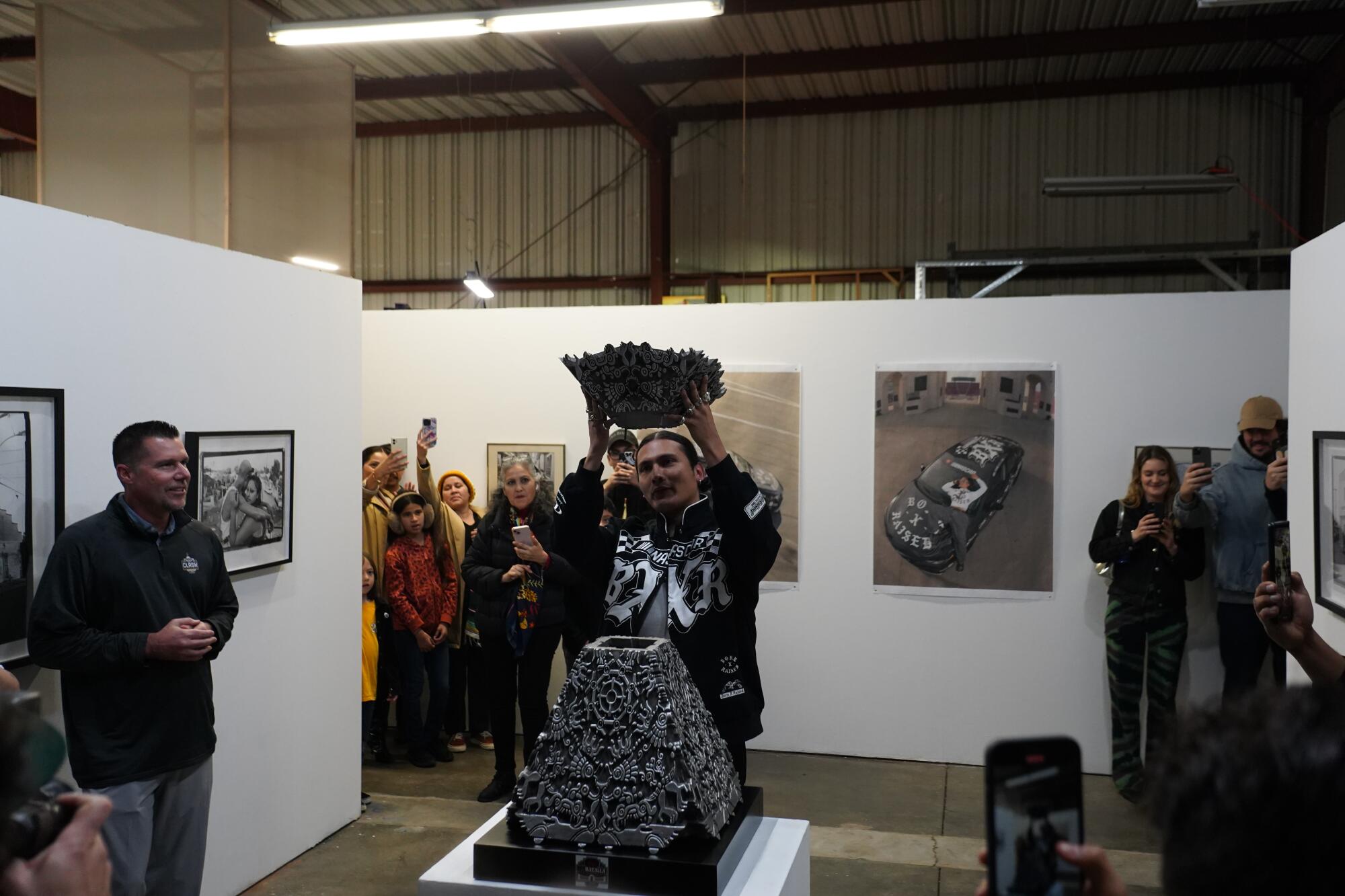
The artist Ozzie Juarez at the presentation of the trophy at the Tláloc Studios.
(Kaela Swanson/NASCAR)
The NASCAR Mexico Series race, also known as King Taco La Batalla at El Coliseo, having its inaugural moment at the Coliseo feels equally symbolic for Juárez, who is from South Central and understands the inextricable connection that Latinos have so much with the city as with sport. . “The reason I chose these symbols and the language I chose is because Los Angeles has a lot to do with Mexican culture (obviously it's a melting pot, we have everything here), but Latin culture is really bringing something to the table” .
Juárez wanted the trophy to look like a totem pole that represented where Los Angeles meets Mexico, honoring both cultures at the same time. “He thought a lot about it, not only culturally, but functionally,” says Dave Allen, NASCAR West Region track president. NASCAR has commissioned artists to create trophies in the past, but Allen says he's never seen a trophy like this. “You want drivers to compete for more than just bragging rights. You want them to compete for something they can also take home. I think this trophy did that. “I’m sure everyone will compete for it.” (NASCAR also collaborated with Los Angeles brand Born (NASCAR at the Coliseum on Sunday).
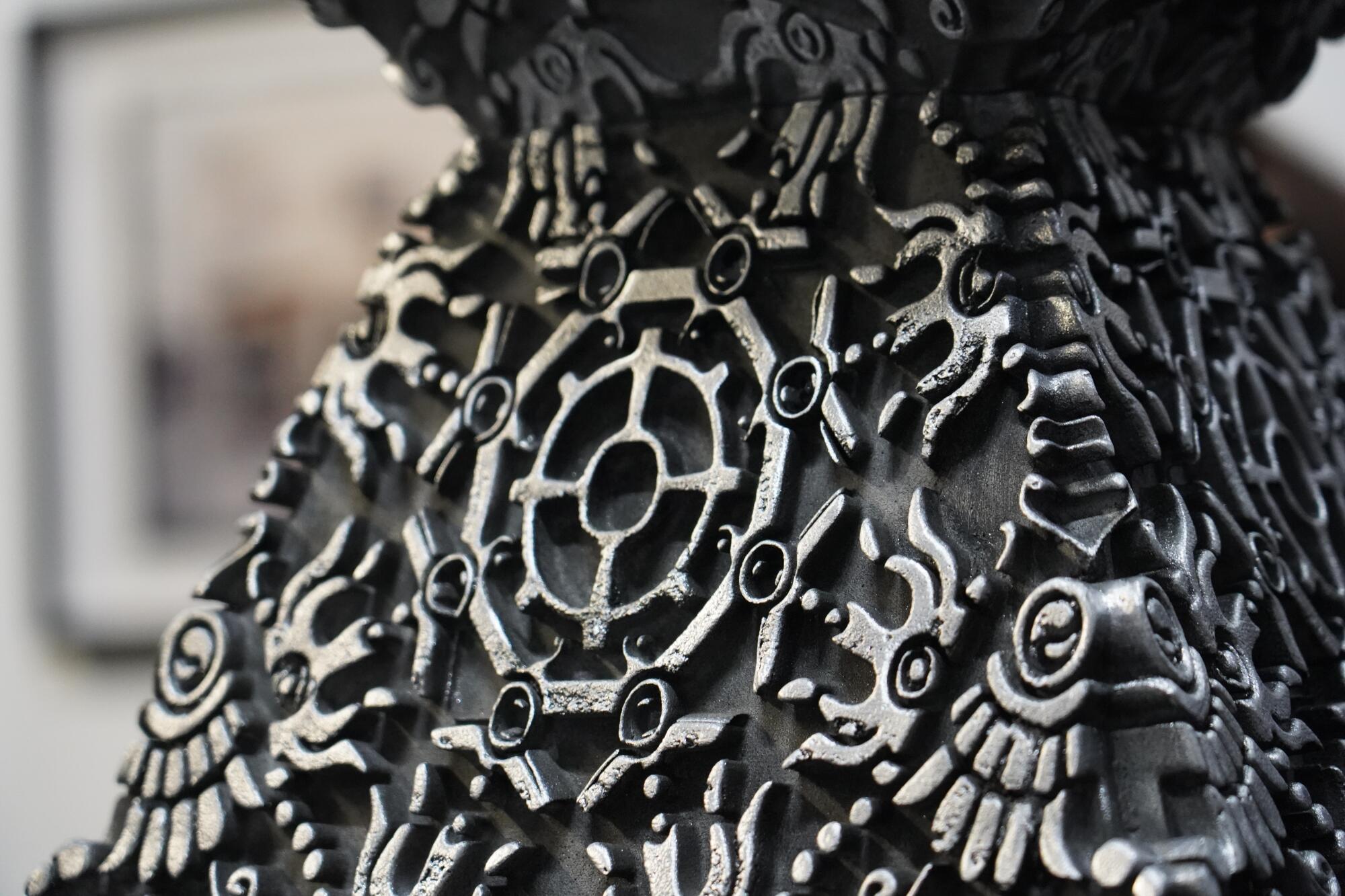
Juárez describes the trophy as “a kind of perfect fusion between Mexico and Los Angeles.”
(Kaela Swanson/NASCAR)
Juárez is beloved throughout Los Angeles for his distinctive style and multifaceted practice, from painting to sculpture, as well as his ability to create community and space. The opening of Juárez's latest solo exhibition, “OXI-DIOS,” and curated group exhibition, “Angelitos De Plata,” at Charlie James Gallery last month was so packed that the Chinatown space radiated body heat on one night particularly cold. Many Los Angeles artists consider Tlaloc Studios their home base.
At the trophy inauguration, King Taco, race partner of the NASCAR Mexico Series, was in charge of catering. There was a Gregory Bojorquez and Jaramillo photography exhibit on the walls and a race car adorned with Born X Raised stickers in the parking lot. Niño Génesis was behind the decks, playing classics like “Un Rinconcito En El Cielo” by Ramón Ayala. Juárez removed the cloth from the trophy and the crowd erupted in applause, followed later by fireworks shooting into the night sky. The celebration felt like the trophy itself, which Juárez describes as “a kind of perfect fusion between Mexico and Los Angeles.”

